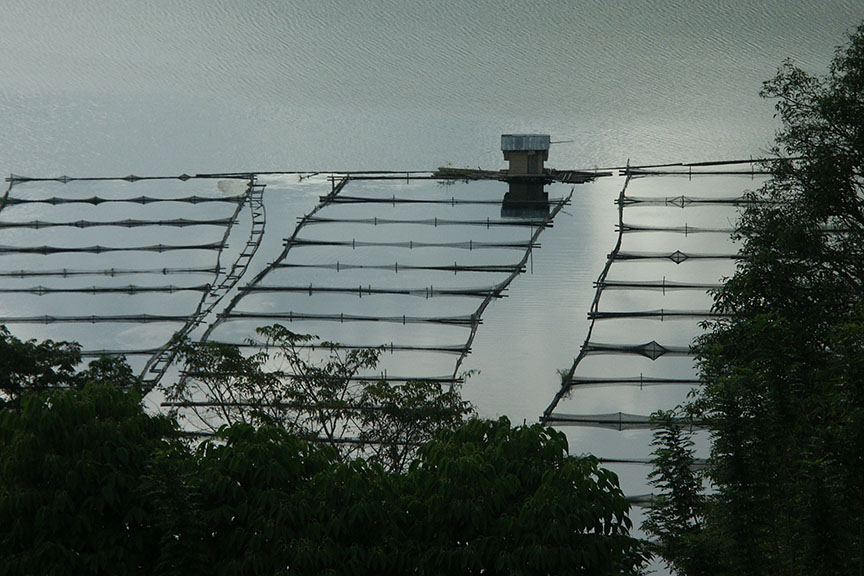 Fish cages in Lake Sebu. MindaNews file photo by Bobby Timonera
Fish cages in Lake Sebu. MindaNews file photo by Bobby Timonera
KORONADAL CITY (MindaNews / 8 June) – At least 30 hectares of illegal tilapia fish pens in Lake Sebu town, South Cotabato have been cleared in line with efforts to conserve the lake and to prevent fish kills there, an official said.
Zaldy Artacho, Lake Sebu municipal agriculture officer, said they conducted the clearing operations on Lake Sebu where massive tilapia fish kills have occurred in the last several years.
“We were able to confiscate 800 bamboo poles used by illegal fish cage operators,” Artacho said in a statement Thursday from the Provincial Information Office.
The demolition of illegal fish pens was in line with the executive order signed by Lake Sebu Mayor Antonio Fungan, which directs “a 10-percent maximum allowable aquaculture zone in the municipal waters.”
Artacho said that most of the illegal fish cage operators voluntarily destroyed their tilapia pens.
The demolition of illegal fish cages in Lake Sebu is seen as among the solutions to conserve the lake and to prevent the recurrence of fish kills that brought huge losses to local fish cage operators.
Mayor Fungan earlier said the allowable area for fish cage operations in Lake Sebu will only be 10 percent of the lake as agreed during a consultation meeting called by the local government last February 27.
During the meeting, he said some 464 fish cage operators signified full support to the move, which is in compliance with government fishery regulations.
Under Republic Act 8550 or the Philippine Fishery Code of 1998, only 10 percent of the total area of inland waters is allowed for aquaculture development.
Lake Sebu, which is the largest of the town’s three lakes, spans 354 hectares and covers barangays Bacdulong, Takunel and Poblacion. The town’s other lakes are Lahit and Seloton.
With the implementation of the 10-percent utilization limit, Lake Sebu’s fish cages and related structures should only cover 35.4 hectares.
Prior to the fresh demolition of the 30 hectares, fish cages covered 23.19 percent or 82 hectares of the entire Lake Sebu, records showed.
The municipal government placed the entire municipality under a state of calamity last February as a result of the fish kill from January 27 to February 4.
The fish kill had destroyed nearly 1.4 million tons of tilapia worth P126 million from 4,944 fish cages owned by 464 operators.
Experts noted that the overcrowding of fish cages at the lake, the proliferation of water hyacinths and the use of commercial feeds by operators have caused its waters to deteriorate, triggering fish kills.
They were blamed for the occurrence of “kamahong,” a phenomenon that is mainly caused by the sudden rise in the water’s temperature.
“Kamahong,” which usually occurs during the rainy season, triggers the rise of sulfuric acid in the lake’s waters that eventually causes the massive fish kill. (Bong S. Sarmiento/MindaNews)
